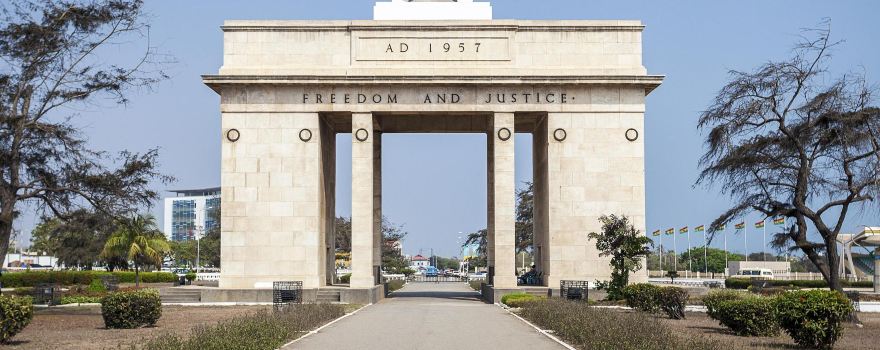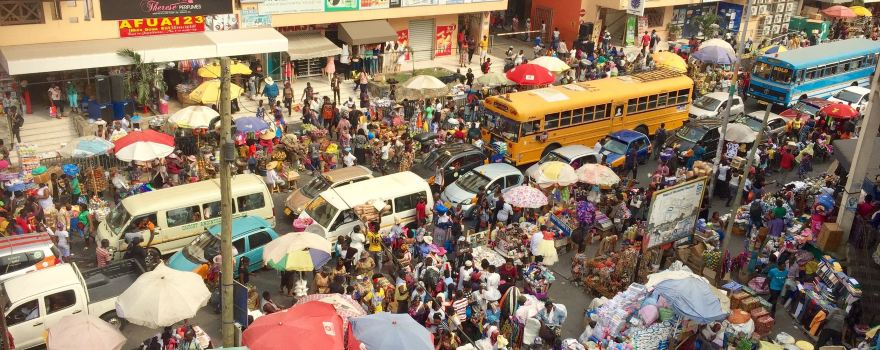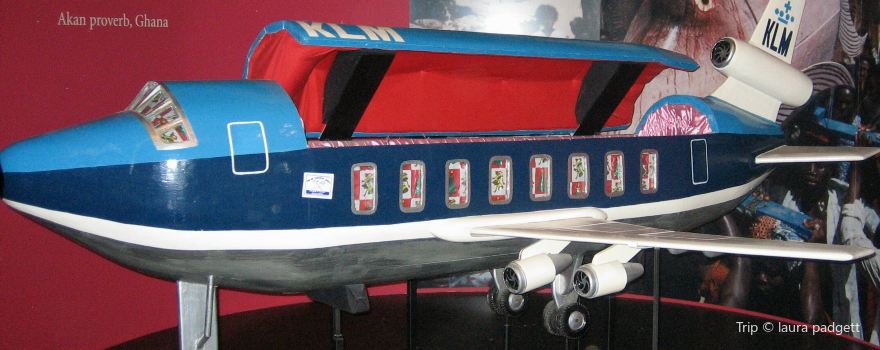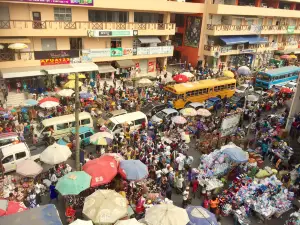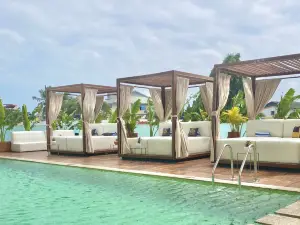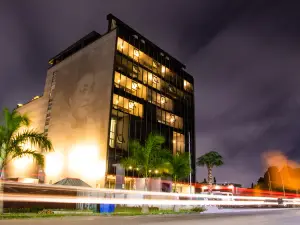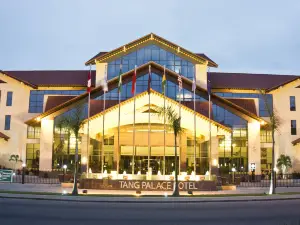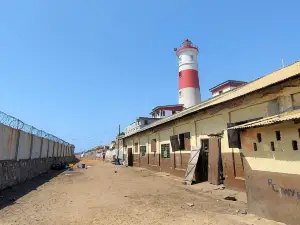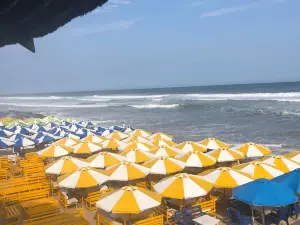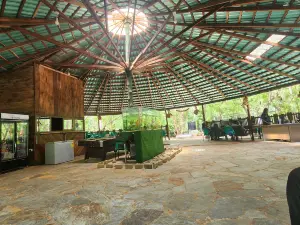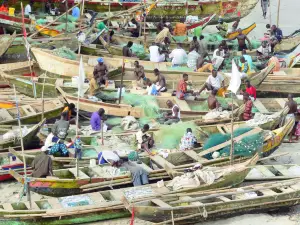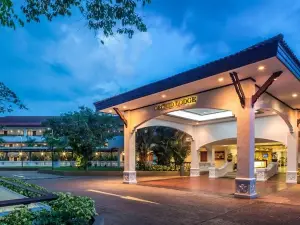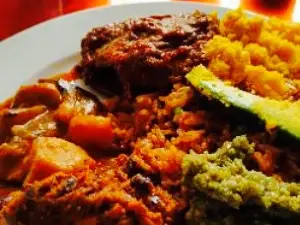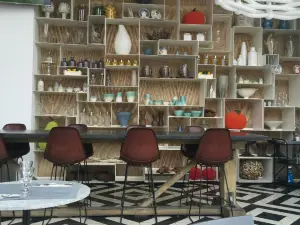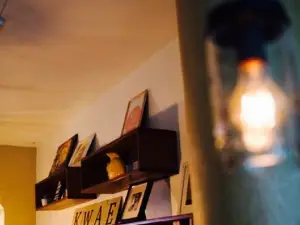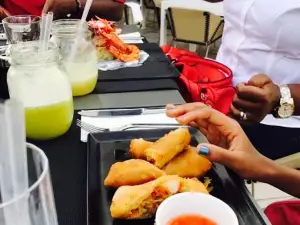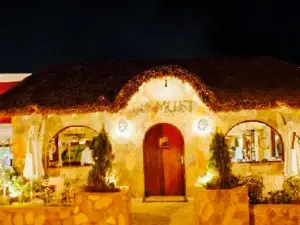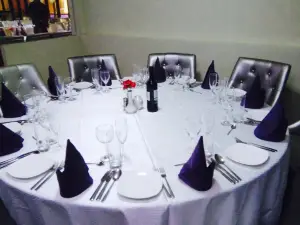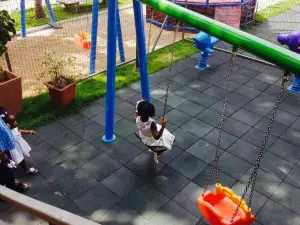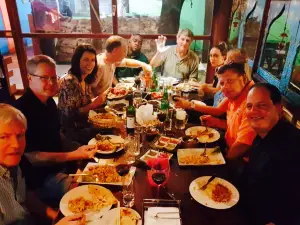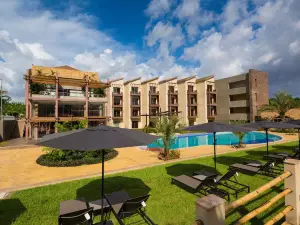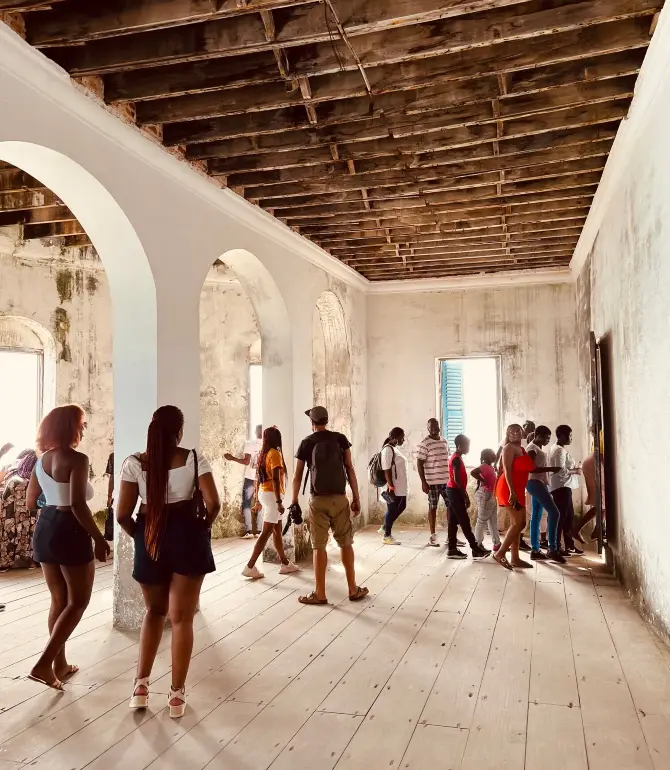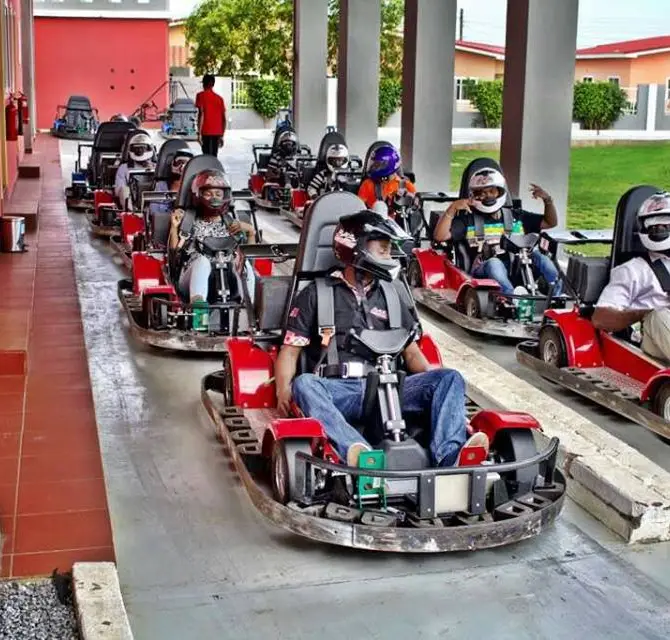Photos
Accra
Things to Do in Accra in 2025 - Top Attractions, Local Food, Hotels & Travel Tips (Updated April 2025) | Trip.com
About Accra
Current Weather Conditions
Accra Local Experiences Map
View Local Experiences on Map
Trip.Best: Accra
View More
Things to do in Accra
What to Do
Looking for things to do in Accra? We provide up-to-date info on everything from must-see scenic spots to local hangouts.
View More
Makola Market
7.0
5.0/59 Review
Jamestown Light House
4.9
4.8/54 Review
Accra Zoo
3.8
This user hasn't left any comments yet
Forts and Castles, Volta, Greater Accra, Central and Western Regions
3.5
5.0/51 Review
Alisa Hotel North Ridge
3.5
This user hasn't left any comments yet
Black Star Gate
3.5
5.0/51 Review
Where to Stay
Discover the most popular places to stay in Accra, complete with recommendations from fellow travelers and special hotel offers
View More
What to Eat
Want to eat like a local? Don't miss out on these top Accra dishes and foodie spots.
View More
Heritage Indian Restaurant
This user hasn't left any comments yet
Avg. USD16/person
"Southeast Asian"
"Open Late"
Indian Restaurant Nirvana Inn Accra
This user hasn't left any comments yet
Avg. USD10/person
"Southeast Asian"
Tandoor Indian Restaurant
This user hasn't left any comments yet
Avg. USD17/person
"Southeast Asian"
"Open Late"
Accra Moments: Through Travelers' Eyes
Post
#Recommended
#travel
#ghana
#historicallandmarks

🌟 Accra's Hidden Gem: Oxford Street Luxury! 🌟
easonau852
7

Labadi Beach Hotel‖Accra, Ghana
Olivia.Perry^68
17

Accra's Colonial Charm & Beachside Bliss 🌊🏨✨
_TI***ne
2

🌟 Accra's Luxury Oasis: Kempinski Hotel Gold Coast 🌴✨
joeyfung852
5

🌟 Accra's Hidden Gem: Villa Monticello Boutique Hotel 🌟
danielsze852
1

🌟 Accra's Colonial Charm & Beachfront Bliss 🌊
joeyu852
1
View More
What People Are Saying About Accra
Write a Review
Makola Market
Nickolas C
National Museum of Ghana
苦海无边,望不到岸
Kwame Nkrumah Memorial Park & Mausoleum(NAB VOYAGE TOURS)
苦海无边,望不到岸
Jamestown Light House
Nickolas C
LA Pleasure Beach
苦海无边,望不到岸
Forts and Castles, Volta, Greater Accra, Central and Western Regions
苦海无边,望不到岸
Black Star Gate
苦海无边,望不到岸
Best of Accra
Popular Types of Attractions in Accra
Popular Attractions in Accra
University of Ghana Computing Systems(UGCS) | Culture Beyond Borders (CBB) | Ecobank - Spintex Branch | Golden Dragon Casino - Osu Mall | Zangon Makeri Central Mosque | Efua Sutherland Children's Park | Achimota Forest | Kane Kwei Carpentry Workshop | G2G | St Francis Xavier Catholic Church | Calvary Methodist Church, Adabraka | Centre for National Culture | Silverbird Cinemas Accra Mall | Trashy Bags | FANTASY DOME | Happy Art | Accra Zoo | Accra Arts Centre | Sun Trade Beads | Geese Park (Asomdwee Park) | Achimota Mosque 2 | Achimota Golf Club
Popular Ranked Lists
Popular Best Things to Do in Shangqiu | Top 3 Best Things to Do in Shengsi | Top 15 Local Restaurants in Christchurch | Popular Premium Hotels in Toap | Top 10 Local Restaurants in Mexico City | Popular Local Restaurants in Berlin | Popular Luxury Hotels Near Maggona | Popular Best Things to Do in Xing'an County | Popular Premium Hotels in Durango | Top 5 Best Things to Do in Danzhou | Popular Best Things to Do in Shaoyang | Top 19 Local Restaurants in Moscow | Popular Local Restaurants in Zhangjiajie | Top 10 Local Restaurants in Geneva | Popular Premium Hotels in En Gev | Popular Best Things to Do in Baiyin | Top 9 Local Restaurants in Colombo | Top 3 Best Things to Do in Linxia Prefecture | Top 10 Best Things to Do in Hechi | Popular Best Things to Do in Haining | Popular Premium Hotels in Brentwood Bay | Top 20 Local Restaurants in Tbilisi | Popular Luxury Hotels Near Nassau | Popular Best Things to Do in Guang'an | Top 15 Local Restaurants in Birmingham | Popular Luxury Hotels Near Goslar | Top 16 Local Restaurants in Wenzhou | Popular Premium Hotels in Phuc Yen | Popular Best Things to Do in Nanchong | Popular Luxury Hotels Near Sandakan
Popular Restaurants in Accra
Zen Garden | La Piazza | Sankofa Restaurant | Heritage Indian Restaurant | Living Room | ChopItaly | Oriental Patisserie & Restaurant - Spintex | Capitol Cafe & Restaurant | Coco Lounge | Salvatore | Tandoor Indian Restaurant | Pataase Restaurant | Atinka Restaurant & Bar | Indian Restaurant Nirvana Inn Accra | Mamma Mia Pizzeria - Osu | Le Must Family Restaurant Accra Mall | Azmera Restaurant | Café Kwae | Skybar | Favourite Restaurant | Pinocchio Gelato Italiano | Grand Taste Chinese Restaurant | Jamrock Restaurant & Grill | Yasmina Lebanese Cuisine | shisha lounge | Toro-Spanish Restaurant | Captain Hook Restaurant | Bamboo Restaurant | Country Kitchen | Get Stuffed Deli
Popular Destinations
Da Nang Travel | Nha Trang Travel | Hakone Travel | Munich Travel | Daanbantayan Travel | Lisbon Travel | Datong Travel | Fukuoka Travel | Tacloban Travel | Madrid Travel | Phu Quoc Island Travel | Kabul Travel | Cagayan De Oro Travel | Athens Travel | Ningbo Travel | Pennsylvania Travel | Taoyuan Travel | Kos Travel | Surat Thani Travel | Latina Travel | Richmondshire District Travel | Acireale Travel | Nizhny Novgorod Oblast Travel | Orotava Valley Travel | Ruse Province Travel | Sargent's Purchase Travel | Brussels-Capital Region Travel | Stony Brook Travel | Wakayama Prefecture Travel | Grand Prairie Travel
Recommended Attractions at Popular Destinations
Bangkok attraction near me | Manila attraction near me | Tokyo attraction near me | Taipei attraction near me | Hong Kong attraction near me | Seoul attraction near me | Kuala Lumpur attraction near me | Los Angeles attraction near me | Shanghai attraction near me | New York attraction near me | Shenzhen attraction near me | Osaka attraction near me | Singapore attraction near me | London attraction near me | Guangzhou attraction near me | San Francisco attraction near me | Beijing attraction near me | Macau attraction near me | Bali attraction near me | Jakarta attraction near me | Paris attraction near me | Ho Chi Minh City attraction near me | Istanbul attraction near me | Phuket attraction near me | Chicago attraction near me | Seattle attraction near me | Toronto attraction near me | Orlando attraction near me | Cebu attraction near me | Chiang Mai attraction near me
Popular Trip Moments
2-Bedroom en-suit service apartment. | University of Ghana is a nice place to visit where students learn and aquire knowledge. | James Fort | A birds-eye view of makola market☺️ | Akwaaba Lounge at KIA Ghana | Labadi Beach Hotel‖Accra, Ghana | When in Accra, you must experience Makola Market and feel the local market atmosphere | Accra's Colonial Charm & Beachside Bliss 🌊🏨✨ | This is the osu castle beach | 🌟 Accra's Luxury Oasis: Kempinski Hotel Gold Coast 🌴✨ | 🌟 Accra's Colonial Charm & Beachfront Bliss 🌊 | 🌟 Accra's Hidden Gem: Oxford Street Luxury! 🌟 | 🌟 Accra's Hidden Gem: Villa Monticello Boutique Hotel 🌟 | Labadi Beach 🌊 Accra | Saturday in Ghana | 😍🤩 Explore the HISTORICAL Jamestown! | 🥕👚 WANDER around Makola & Kantamanto 😍❤️ | Summer in West Africa 🇬🇭‼️ Independence Square | Roco Mamas restaurant | Must Visit Sites in Accra Ghana | Food in Ghana 🇬🇭
Popular Travel Types
More Things To Do in Accra
The Agbogbloshie (Accra E-waste and Recycling experience) Private Tour | A Tour to Boti Falls | Know Ghana in 4 hrs - Accra City Tour | The Cape Coast Tour | Escape Accra City to Aburi Gardens and Tetteh Quarshie Cocoa Farms | Experience the Beauty, History and the Culture Of Accra in a Day | Assin Manso Slaves River and Cape Coast Castle Day Tour | Cape Coast and Elmina Tours ( A cultural heritage tour) | Cape Coast-Elmina Castles and Kakum Canopy Walk Tour | Cape Coast ,Elmina Castle and Kakum Full-Day Tour | Boti Falls, Botanic Gardens, Cocoa Fam, Umbrella Rock Experience | Experience Boti Waterfalls, Aburi Botanical Gardens & Tetteh Quarshie Cocoa Farm | Accra Guided City Tour Experience | The Cape Coast Day Tour | Africa(18 countries) eSIM | Day pass/Data package | 1-30 days | QR code | Global 5G Prepaid eSIM: 108 Regions, 1-30 Days, Tethering Support, Instant QR Setup | Global eSIM (149 countries/regions) 4G/5G | eSIM | China Mobile CMLink | 1-30 day optional | Instant order and use | Supports hotspots | QR Code | Global (147 countries) | 4G/5G eSIM | Daily/Data packages | 24-hour billing | 1-30 days | QR code | Africa universal eSIM 4G high-speed network QR code | Africa 5G eSIM | Seamless Connectivity Across South Africa, Kenya, Egypt, Morocco & More | One-Click installation | QR Code | Africa eSIM | Daily Package/Total Package | 1-30 days | 24-hour billing | QR code
About
Payment Methods
Our Partners
Copyright © 2025 Trip.com Travel Singapore Pte. Ltd. All rights reserved
Site Operator: Trip.com Travel Singapore Pte. Ltd.
Site Operator: Trip.com Travel Singapore Pte. Ltd.

